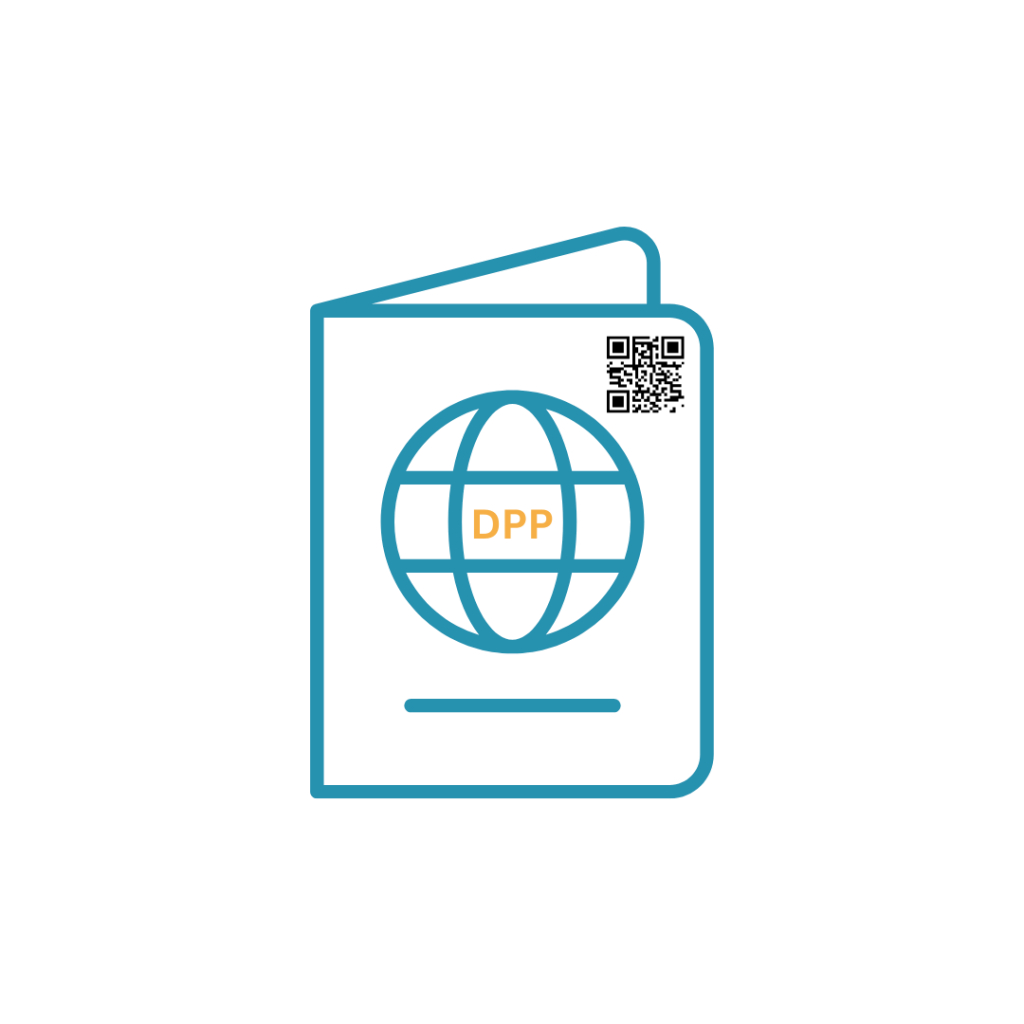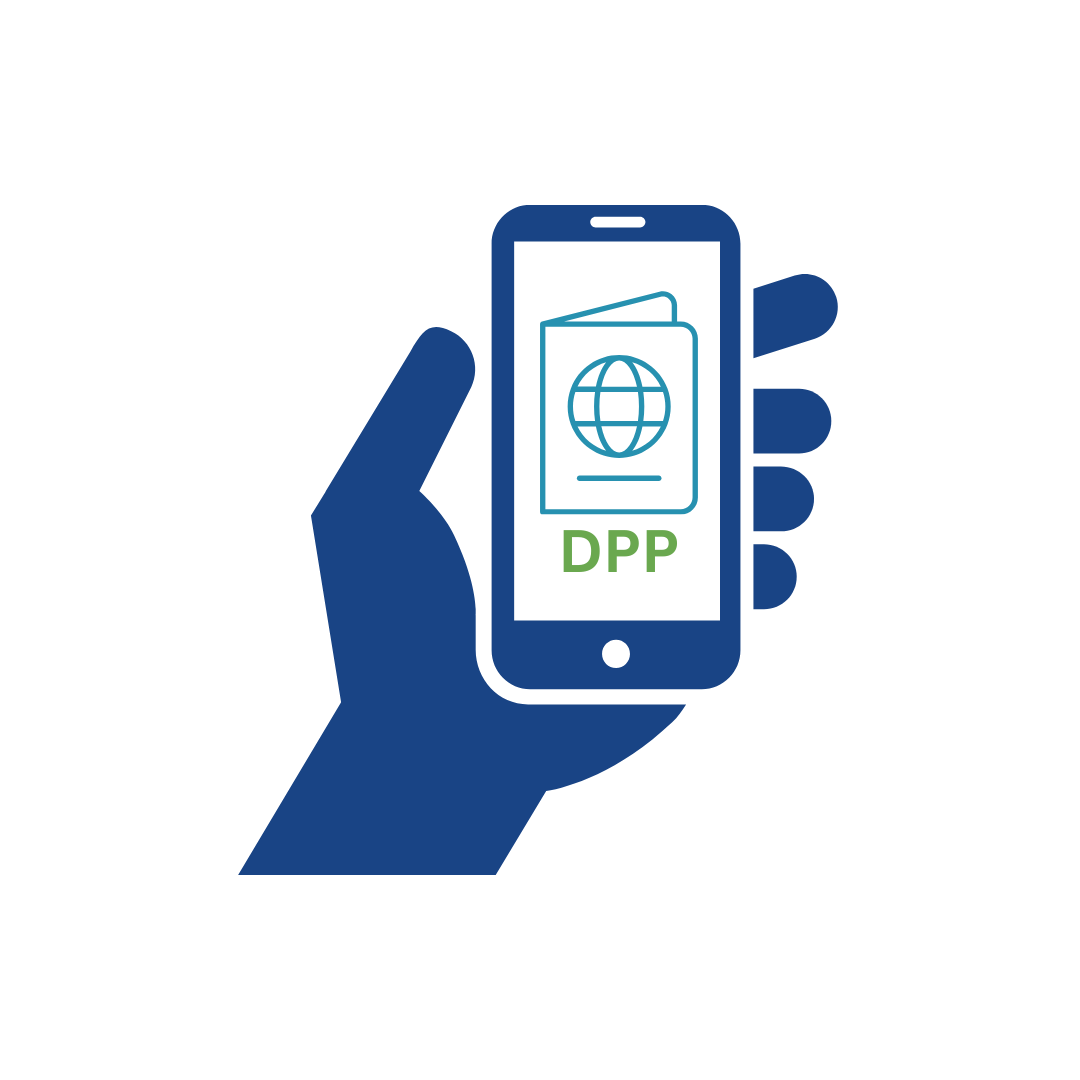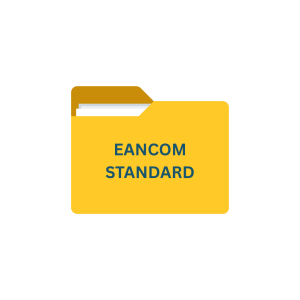Introduction
The digital product passport represents a paradigm shift in product information management. A digital product passport serves as a virtual identity card for physical items. It’s a digital record that accompanies a product throughout its lifecycle, storing and sharing crucial information about its origin, composition, and journey through the supply chain. This innovative concept aims to bring unprecedented transparency to product lifecycles, benefiting manufacturers, retailers, consumers, and the environment alike.
Let us uncover the driving forces behind the adoption of digital product passports, their potential to enhance sustainability efforts, and the challenges that lie ahead in their implementation. Whether you’re a business leader, a sustainability enthusiast, or simply curious about the future of product information, this guide will provide valuable insights into this transformative technology
Understanding the Digital Product Passport
At its core, a digital product passport is a repository of data that can be accessed via a unique product identifier, often in the form of a QR code or RFID tag attached to the product. This identifier acts as a gateway to a wealth of information, allowing stakeholders to trace the product’s history, verify its authenticity, and understand its environmental impact.
The information contained within a digital product passport can be vast and varied, depending on the product and industry. It may include details about:
- Raw materials used and their sources
- Manufacturing processes and locations
- Energy consumption and carbon footprint
- Repair and maintenance history
- Recycling and disposal instructions
By centralizing this product information in a digital format, product passports enable better decision-making at every stage of a product’s life. They empower consumers to make informed choices, help businesses optimize their supply chains, and assist regulators in enforcing sustainability standards.
The concept of digital product passports is not entirely new. It builds upon existing practices like product labeling and certification schemes. However, what sets it apart is the comprehensive nature of the information provided and the ease with which this data can be accessed and updated in real-time.
The Driving Forces Behind Digital Product Passports
The emergence of digital product passports is not a spontaneous development but rather a response to several pressing global challenges and evolving market demands.
Understanding these driving forces is crucial to appreciating the significance of this innovation

1. Sustainability Imperatives
Climate change and environmental degradation have thrust sustainability to the forefront of global concerns. Consumers, businesses, and governments are increasingly recognizing the need for more sustainable production and consumption patterns. Digital product passports offer a powerful tool to track and improve the environmental impact of products throughout their lifecycle.
By providing detailed information about a product’s carbon footprint, material composition, and recyclability, digital passports enable:
- Informed consumer choices
- Better end-of-life management
- Optimization of production processes
This transparency can drive competition among manufacturers to improve their sustainability credentials, leading to overall reduced environmental impact across industries.
2. Regulatory Pressures
Governments and international bodies are introducing stricter regulations to promote sustainability and circular economy principles. The European Union, for instance, is at the forefront of this movement with initiatives like the European Green Deal and the Circular Economy Action Plan.
These regulatory frameworks are pushing for:
- Extended producer responsibility
- Increased product durability and repairability
- Enhanced recycling and waste reduction
Digital product passports align perfectly with these objectives, providing a standardized way to communicate and verify compliance with evolving regulations.
3. Consumer Demand for Transparency
Modern consumers are increasingly conscious about the products they purchase. They want to know:
- Where do their products come from
- How they were made
- What impact they have on the environment and society
Digital product passports cater to this demand for transparency, allowing consumers to make informed decisions that align with their values. This shift in consumer behavior is pushing brands to be more open about their supply chains and production processes.
4. Technological Advancements
The rise of digital product passports has been made possible by advancements in technologies such as:
- Internet of Things (IoT)
- Blockchain
- Cloud computing
- Big data analytics
These technologies enable the collection, storage, and analysis of vast amounts of product data in real-time, making the concept of digital product passports not just feasible but highly effective.
As we continue our exploration, we’ll delve into how these driving forces are shaping the implementation and adoption of digital product passports across various industries.
Key Components of a Digital Product Passport

A digital product passport is a complex system comprising several key components that work together to provide a comprehensive view of a product’s lifecycle.
Understanding these components is crucial for grasping the full potential of this technology.
1. Unique Product Identifier
At the heart of every digital product passport is a unique identifier. This could be:
- A QR code
- An RFID tag
- A serial number
- A blockchain token
This identifier serves as the key to accessing the product’s digital information. It’s typically physically attached to the product or its packaging, allowing for easy scanning and data retrieval.
2. Data Carrier
The data carrier is the physical medium that stores or links to the product’s digital information. Common types include:
- QR codes: Easy to generate and scan with smartphones
- RFID tags: Allow for contactless reading of product information
- NFC chips: Enable short-range wireless communication
The choice of data carrier depends on factors like cost, durability, and the specific needs of the industry or product type.
3. Digital Platform
The digital platform is the backend system that stores, manages, and provides access to the product data. This could be:
- A cloud-based database
- A blockchain network
- A distributed ledger system
The platform needs to be secure, scalable, and capable of handling large volumes of data from multiple sources.
4. Data Standards and Protocols
To ensure interoperability and consistency, digital product passports rely on standardized data formats and communication protocols. These standards define:
- What information should be included
- Material and Composition Data: Details on raw materials, recycled content, and hazardous substances.
- Manufacturing Information: Insights into the product’s origin, production process, and labor conditions.
- Usage Data: Guidelines for maintenance, repairs, and upgrades.
- End-of-Life Instructions: Recycling, disposal, and refurbishment recommendations.
- Regulatory Compliance Details: Certifications and legal conformity details.
- Ownership and Transaction History: Provenance data to ensure authenticity and resale value.
- How data should be structured
- How different systems can exchange information
Organizations like GS1 are working on developing global standards for digital product passports to ensure widespread adoption and compatibility.
5. User Interface
The user interface is how stakeholders interact with the digital product passport. This could be:
- A mobile app for consumers
- A web portal for businesses
- An API for system integration
The interface needs to be user-friendly, providing easy access to relevant information for different user groups.
6. Data Collection and Verification Mechanisms
Ensuring the accuracy and reliability of the information in a digital product passport is crucial. This component includes:
- Automated data collection systems (e.g., IoT sensors)
- Manual data entry processes
- Third-party verification and auditing mechanisms
These systems work together to maintain the integrity of the product data throughout its lifecycle.
Understanding these key components provides a foundation for appreciating the complexity and potential of digital product passports.
Benefits of Digital Product Passports
1. Enhanced Transparency and Traceability
Digital product passports provide unprecedented visibility into a product’s journey from raw materials to end-of-life
2. Improved Sustainability
- They enable better tracking of environmental impact throughout the product lifecycle
- Consumers can make more informed choices based on sustainability criteria
- Businesses can identify areas for improvement in their production processes
3. Facilitation of Circular Economy
Digital product passports are a key enabler of circular economy principles:
- They provide information on product composition, facilitating easier recycling and reuse
- Repair and refurbishment become more straightforward with access to detailed product specifications
- End-of-life management is optimized, reducing waste and promoting resource efficiency
4. Enhanced Consumer Experience
- Easy access to product information, including usage instructions and care guidelines
- Verification of product authenticity, combating counterfeiting
- Personalized recommendations based on product usage data
5. Regulatory Compliance
As regulations around product sustainability and circular economy principles become more stringent, digital product passports offer a streamlined way to demonstrate compliance:
- Automated reporting of sustainability metrics
- Easy verification of adherence to standards and certifications
- Simplified auditing processes
6. Data-Driven Decision Making
The wealth of data provided by digital product passports enables more informed decision-making across the value chain:
- Manufacturers can optimize production processes based on lifecycle data
- Retailers can make better inventory decisions
- Policymakers can craft more effective regulations based on real-world product data
Challenges in Implementing Digital Product Passports
While the benefits of digital product passports are significant, their implementation comes with several challenges that need to be addressed for widespread adoption. Understanding these hurdles is crucial for businesses and policymakers looking to leverage this technology.
1. Data Standardization and Interoperability
One of the primary challenges in implementing digital product passports is the lack of standardized data formats and protocols. This issue manifests in several ways:
- Different industries may have varying requirements for product information
- Existing systems and databases may not be compatible with new passport standards
- Global supply chains involve multiple stakeholders with diverse data practices
Overcoming this challenge requires:
- Development of universal data standards
- Creation of interoperable systems that can communicate across different platforms
- Collaboration between industry players, regulators, and technology providers
2. Data Privacy and Security
Digital product passports involve the collection and sharing of vast amounts of data, raising concerns about privacy and security:
- Consumer data protection must be ensured throughout the product lifecycle
- Sensitive business information needs to be safeguarded
- Cybersecurity measures must be robust to prevent data breaches
Addressing these concerns requires:
- Implementation of strong data encryption and access control measures
- Clear policies on data ownership and usage rights
- Compliance with data protection regulations like GDPR
3. Cost of Implementation
Implementing digital product passports can be a significant investment for businesses, particularly for small and medium-sized enterprises. Costs may include:
- Technology infrastructure upgrades
- Staff training and new hiring
- Integration with existing systems
To mitigate this challenge:
- Phased implementation approaches can be adopted
- Collaborative industry initiatives can help share costs
- Government incentives may be necessary to encourage adoption
4. Supply Chain Complexity
Modern supply chains are often complex and globalized, making it challenging to track products from source to consumer:
- Multiple suppliers and sub-suppliers may be involved
- Different countries may have varying regulations and standards
- Some parts of the supply chain may lack digital infrastructure
Addressing this complexity requires:
- Collaboration and information sharing across the entire supply chain
- Investment in digital infrastructure in less developed regions
- Development of user-friendly tools for data input and management
5. Consumer Adoption and Education
For digital product passports to be effective, consumers need to understand their value and how to use them:
- Many consumers may be unfamiliar with the concept
- There might be resistance to sharing personal data
- The benefits of using digital passports need to be clearly communicated
Overcoming this challenge involves:
- Consumer education campaigns
- User-friendly interfaces for accessing product information
- Clear communication of the benefits and privacy safeguards
6. Regulatory Landscape
The regulatory environment surrounding digital product passports is still evolving:
- Different regions may have varying requirements
- Regulations may change rapidly as the technology develops
- Compliance can be complex for businesses operating globally
To navigate this challenge:
- Close collaboration between industry and regulators is necessary
- Flexible systems that can adapt to changing regulations are crucial
- Regular monitoring of the regulatory landscape is essential
By addressing these challenges head-on, stakeholders can pave the way for the successful implementation and widespread adoption of digital product passports
Digital Product Passport - Industries and Applications
Digital product passports have the potential to transform a wide range of industries, each with its unique applications and benefits. Let’s explore how this technology is being applied across different sectors.
1. Fashion and Textiles
- Traceability: Passports can track the origin of materials, from cotton fields to finished garments
- Sustainability: Information on water usage, chemical treatments, and carbon footprint can be shared
- Authentication: Digital passports help combat counterfeiting in luxury fashion
2. Electronics and Technology
- Provide detailed component information for easier repairs
- Track rare earth metals and promote recycling
- Offer software update history and compatibility information
3. Automotive Industry
- Vehicle lifecycle management
- Maintenance and repair history tracking
- End-of-life recycling optimization
4. Food and Agriculture
- Food safety through improved traceability
- Transparency in organic and fair-trade certifications
- Consumer information on nutritional content and allergens
5. Pharmaceuticals and Healthcare
- Ensuring drug authenticity and combating counterfeit medicines
- Tracking cold chain logistics for sensitive products
- Managing product recalls efficiently
6. Luxury Goods and Collectibles
- Authentication and provenance tracking
- Detailed history of vintage and antique items
- Enhanced customer experiences through product storytelling
Conclusion
Digital product passports are more than just a technological innovation – they represent a fundamental shift in how we think about products, their lifecycles, and their impact on our world. As we move towards a more sustainable and transparent future, digital product passports will undoubtedly play a crucial role in shaping the way we produce, consume, and value the goods that are part of our daily lives.
Commport Datapool Solutions
Download: GDSN Buyers Guide
Empower your business with global data synchronization; download our GDSN Buyer's Guide today and take the first step towards streamlined, accurate, and compliant product data management.
Frequently Asked Questions
Companies can integrate DPPs by adopting EDI (Electronic Data Interchange) and GDSN (Global Data Synchronization Network) solutions. These technologies ensure accurate, real-time data exchange, enabling seamless product tracking and regulatory compliance.
DPPs enhance supply chain transparency, promote circular economy initiatives, help combat counterfeiting, and ensure regulatory compliance. They empower consumers and businesses with data to make informed purchasing and sustainability decisions.
By leveraging blockchain technology and unique identifiers, DPPs allow businesses and consumers to verify product authenticity. This helps combat counterfeit goods, especially in industries like luxury fashion, pharmaceuticals, and electronics.
Several industries can leverage DPPs, including fashion and apparel, electronics, automotive, food and beverage, pharmaceuticals, and retail. These industries face growing regulatory pressures and consumer demands for sustainability and ethical sourcing.
DPPs are typically linked to QR codes, RFID tags, or blockchain-based systems, allowing stakeholders to scan and retrieve product details in real time. Updates can be made by manufacturers, regulators, or authorized parties throughout the product lifecycle.





